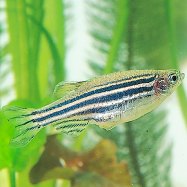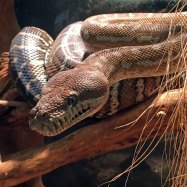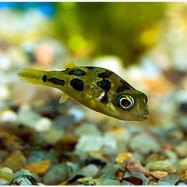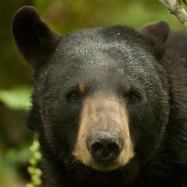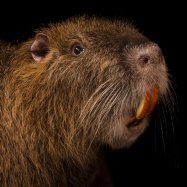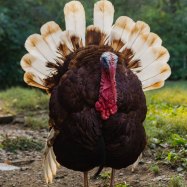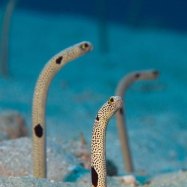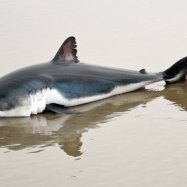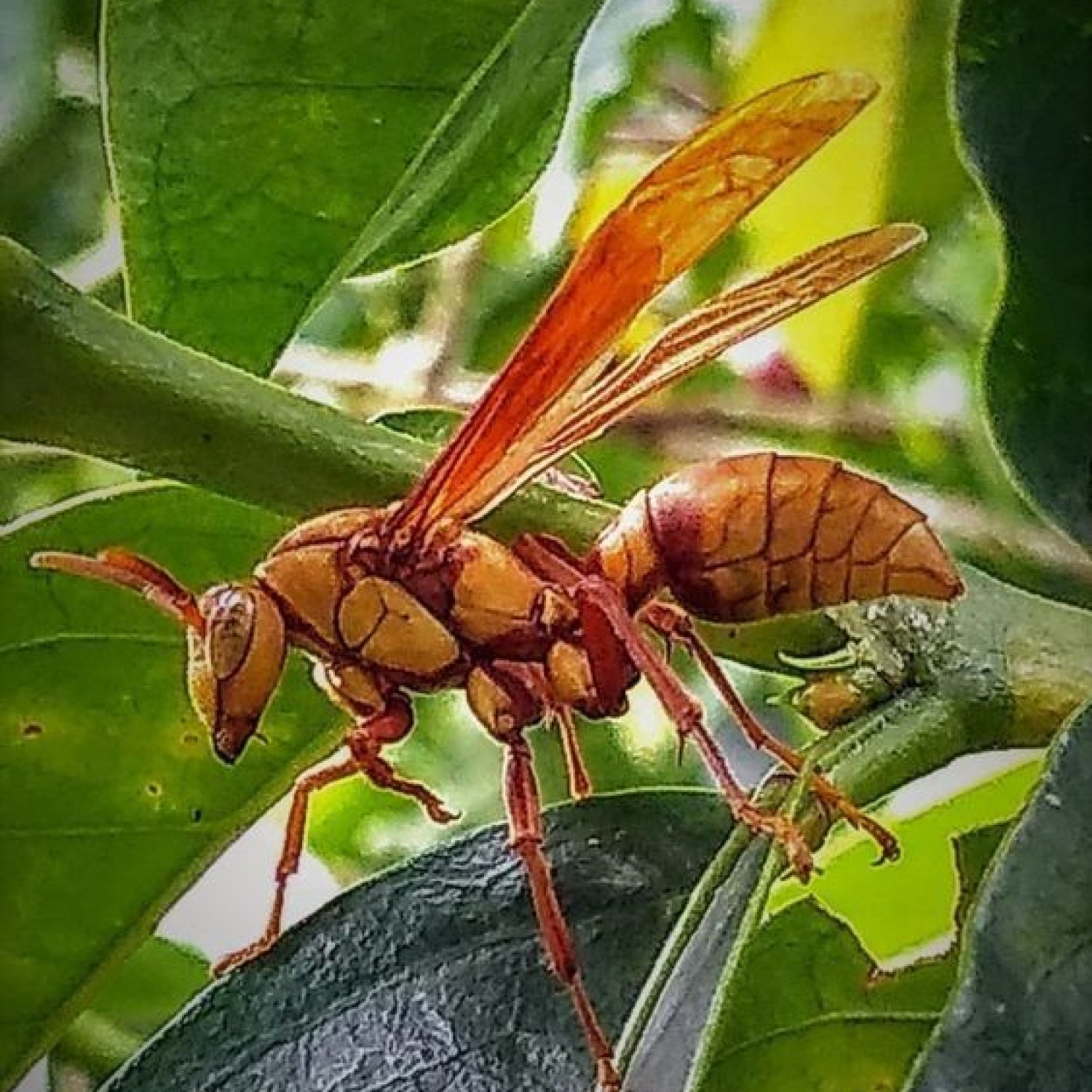
Executioner Wasp
Did you know that the Executioner Wasp is one of the world's largest wasps? These fierce insects belong to the family Vespidae and can be found in the tropical regions of South and Central America. With a body length of up to two inches, they are known for their distinctive pitch-black and yellow striped bodies. Keep your distance from these bold creatures, as their powerful stings can cause severe pain and even temporary paralysis. #animals #insects #nature 🐝
Animal Details Summary:
Common Name:
Kingdom:
Habitat:
The Lethal Executioner Wasp: A Story of Survival and Fear
In the dense jungles of Central and South America, there lurks a creature that strikes terror into the hearts of even the bravest explorers – the Executioner Wasp. This notorious insect is known for its potent venom and ruthless hunting tactics, earning it a formidable reputation as one of the deadliest wasps in the world. But beyond its menacing appearance and deadly sting, the Executioner Wasp is a fascinating creature with a unique set of survival skills. In this article, we will delve into the secrets of this fearsome predator and uncover the truth behind its notorious reputation Executioner Wasp.A Name that Strikes Fear
Known scientifically as "Polistes carnifex," the Executioner Wasp derives its name from its notorious hunting behavior. Like its namesake, this insect is a ruthless executioner, using its potent venom to paralyze its prey before delivering the final blow. This wasp belongs to the kingdom Animalia, phylum Arthropoda, class Insecta, and order Hymenoptera, making it a distant relative of bees and ants. However, its most notable family is Vespidae – the wasps; notorious for their aggressive nature and formidable stingers.The Habitat of an Executioner
The Executioner Wasp is a native of the humid forests of Central and South America, making its home in dense vegetation and tree hollows. Its preferred habitat is tropical rainforests, although it can also be found in secondary forests and disturbed areas. This versatile insect is well-adapted to its surroundings, using its powerful wings to fly swiftly through the dense canopy and its sharp vision to spot potential prey from high above. Its agile nature makes it a formidable predator, able to hunt and defend its territory efficiently.Predatory Behavior and Feeding Habits
The Executioner Wasp is a formidable hunter, preying on a wide variety of insects, including caterpillars, beetles, spiders, and even other wasps Eurasier. It is an opportunistic feeder, meaning it will consume whatever it can catch, making it a significant predator in its ecosystem. However, what sets this wasp apart from other predators is its unique hunting strategy.Unlike some wasps that rely on stealth and surprise to capture their prey, the Executioner Wasp is an open hunter. It swoops down on unsuspecting prey, paralyzing it with its venomous sting before carrying it back to its nest. Once inside the nest, the wasp lays its eggs on the immobilized prey, providing a fresh food source for its offspring. This method of hunting not only ensures the wasp's survival but also controls the population of its prey, maintaining a balance in the ecosystem.
The Geographical Distribution of the Executioner Wasp
The Executioner Wasp is native to Central and South America, with a wide distribution that covers countries such as Brazil, Ecuador, Colombia, and Venezuela. However, it is also found in other regions of the world, such as Mexico, Costa Rica, Panama, and Honduras. Its adaptable nature has allowed it to thrive in various environments, making it a common sight in the forests of these countries.The Beauty of Danger
Despite its fearsome reputation, the Executioner Wasp possesses a unique and captivating beauty. Its body is adorned with striking colors, ranging from bright yellow and orange to deep brown and black, creating a bold and attractive pattern. Its head and thorax are typically black, while its abdomen boasts a bright, fiery orange hue. This combination of colors is not only aesthetically pleasing but also serves as a warning to potential predators. Like many other venomous creatures, the Executioner Wasp relies on its distinctive coloration to ward off predators, signaling its lethal sting and powerful venom.Strength in Numbers
The Executioner Wasp is a social insect, forming large nests that can hold up to hundreds of individuals. These complex structures are made of a paper-like substance created by chewing and mixing wood fibers with saliva. The nests are usually found in tree hollows, crevices, or under the eaves of buildings. Within these colonies, each wasp has its specific tasks and roles, from foragers to nest builders and caretakers. This system of cooperation and division of labor makes the colony more efficient in hunting, nesting, and survival.The Length of an Executioner
One of the most impressive features of the Executioner Wasp is its significant size. Measuring up to 1.2 inches in length, it is one of the largest known wasp species. Its large size not only makes it an intimidating predator but also enables it to carry larger prey, giving it an advantage over smaller wasp species.The Lethal Sting of the Executioner Wasp
Despite its name and reputation, the Executioner Wasp is not a particularly aggressive insect. It will usually avoid confrontation with humans unless provoked or threatened. However, if provoked, it will deliver a powerful sting that can be lethal to its victims. The wasp's venom contains a cocktail of toxins, including histamine, acetylcholine, and kinins, which can cause severe allergic reactions and even anaphylactic shock in some people. Its powerful sting has made it a feared insect, with many tales of painful encounters with this notorious predator. However, as with many venomous creatures, the Executioner Wasp's sting is only lethal to a small percentage of the population, and fatalities are rare.Surviving the Threat
Despite its aggressive nature and formidable sting, the Executioner Wasp is facing threats to its survival in the wild. Deforestation, habitat loss, and environmental pollution are some of the major factors contributing to the decline in its population. These pressures are not only affecting the wasp but also its prey, leading to a disruption in the delicate balance of the ecosystem. However, conservation efforts and awareness programs are helping to protect the Executioner Wasp and its habitat from further destruction, ensuring its survival for generations to come.In Conclusion
The Executioner Wasp is a fascinating creature, cloaked in beauty and danger. Its lethal reputation and hunting tactics have earned it a spot among the most notorious wasps in the world, yet it remains an essential predator in its ecosystem. Through its unique survival skills and cooperative behavior, this insect has thrived in the dense jungles of South and Central America, serving as a reminder of the delicate balance of nature and the importance of preserving our ecosystems. So the next time you venture into the jungle, keep an eye out for the Executioner Wasp, the lethal executioner of the insect world. But do not fear, admire it from a distance, and appreciate its role in the circle of life.

Executioner Wasp
Animal Details Executioner Wasp - Scientific Name:
- Category: Animals E
- Scientific Name:
- Common Name:
- Kingdom:
- Phylum:
- Class:
- Order:
- Family:
- Habitat:
- Feeding Method:
- Geographical Distribution:
- Country of Origin:
- Location:
- Animal Coloration:
- Body Shape:
- Length:
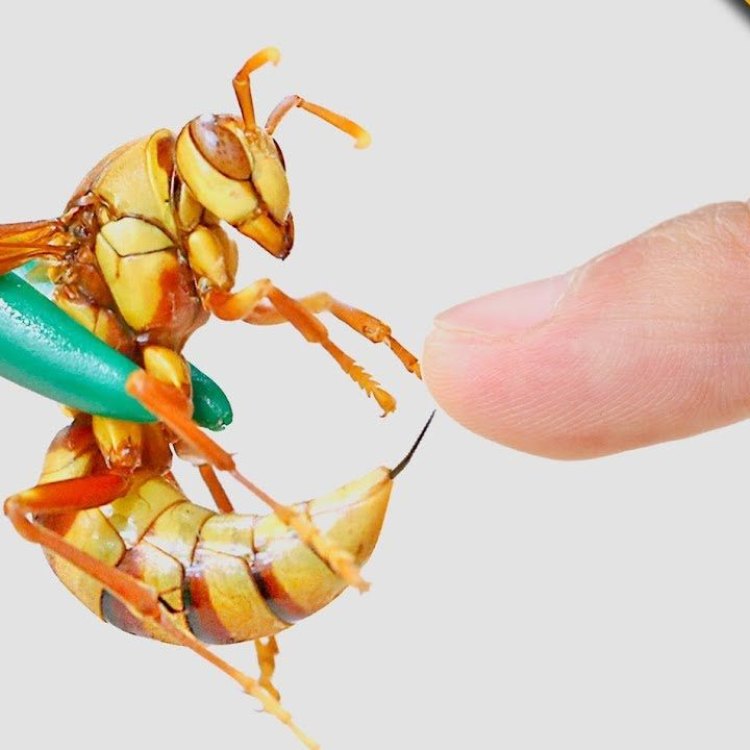
- Adult Size:
- Average Lifespan:
- Reproduction:
- Reproductive Behavior:
- Sound or Call:
- Migration Pattern:
- Social Groups:
- Behavior:
- Threats:
- Conservation Status:
- Impact on Ecosystem:
- Human Use:
- Distinctive Features:
- Interesting Facts:
- Predator:
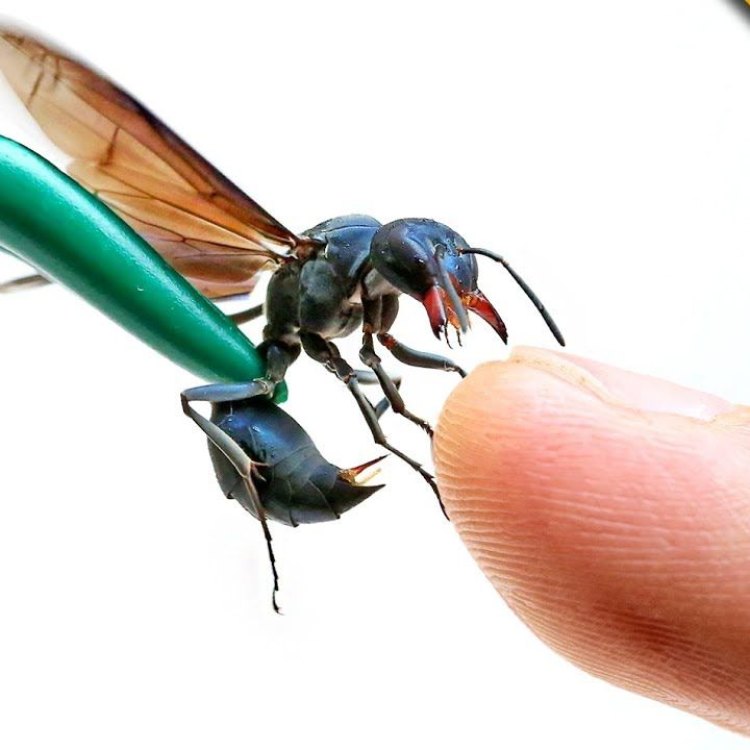
The Fascinating World of Executioner Wasps
Imagine a creature with a fierce reputation, equipped with a deadly stinger, and able to execute its prey with astonishing precision. This is the Executioner Wasp, also known as the Contractor Wasp or the Red Paper Wasp. These insects are not your average, everyday wasps. They are known for their distinctive features, intriguing behavior, and remarkable impact on the ecosystem PeaceOfAnimals.Com. In this article, we will delve into the captivating world of Executioner Wasps and uncover their secrets.Adult Size:
Executioner Wasps, belonging to the family Vespidae, are known for their relatively large size and robust appearance. With an average length of 0.8-1 inch, they are considered one of the largest species of paper wasps. They have a slender, elongated body, and their signature black and red coloration makes them easily recognizable in the wild.
Average Lifespan:
The average lifespan of an Executioner Wasp is about 12-22 days. However, the lifespan can vary depending on the environmental conditions and availability of food. These wasps undergo a complete metamorphosis, starting as an egg, then transforming into a larva, pupa, and finally, an adult. The adult female Executioner Wasp is the only one that can reproduce and has a relatively longer lifespan compared to males Elasmotherium.
Reproduction:
Executioner Wasps have a unique reproductive process. The female wasps have the ability to reproduce either sexual or asexual. They lay their eggs in small paper nests made of chewed wood fibers and saliva. A single nest can hold up to 20-30 eggs. Once the eggs hatch, the larvae are fed with other insects, mainly caterpillars or spiders. This process continues until they reach adulthood.
Reproductive Behavior:
One of the most intriguing aspects of Executioner Wasps is their reproductive behavior. The female wasps have a remarkable ability to change their reproductive strategy based on the environmental conditions. If there is an abundance of food, they will reproduce sexually, resulting in a mixture of males and females. However, if resources are scarce, they will reproduce asexually, resulting in all-female offspring. This adaptive behavior allows them to thrive in fluctuating environments.
Sound or Call:
Unlike other wasp species, Executioner Wasps are not known for their buzzing, but they do produce a distinctive sound by rubbing their mandibles together. This sound is believed to be a communication method used between the wasps, mainly during the mating season.
Migration Pattern:
Executioner Wasps are not known for long-distance migration, but they are known to move their nests to different locations within a short period. This behavior is mainly seen when resources become scarce, and the wasps need to find a new source of food. They also tend to relocate their nests if they sense any threat or disturbance.
Social Groups:
Executioner Wasps are social insects, living in colonies of up to 300 individuals. These colonies consist of a dominant queen, who is the only one that can reproduce, fertile males, and sterile female workers. The queen is responsible for building the nest, laying eggs, and taking care of the young wasps. The male wasps are mainly responsible for mating, while the female workers are in charge of foraging, protecting the nest, and caring for the young.
Behavior:
Executioner Wasps are known for their aggressive behavior, especially when they feel threatened. They are extremely protective of their nest and will attack any perceived intruders. They are also known for their exceptional hunting skills. They are able to locate and capture prey with amazing precision, thanks to their sharp vision and keen sense of smell. Once they capture their prey, they use their powerful stinger to paralyze it and bring it back to the nest.
Threats:
Despite their fearsome reputation, Executioner Wasps are actually not a significant threat to humans. They will only sting if they feel their nest is being threatened or if they are directly handled. However, their venom is potent and can cause an allergic reaction or severe pain in some individuals. These wasps are also prey to a variety of predators such as mantises, birds, and other wasps.
Conservation Status:
The conservation status of Executioner Wasps is currently listed as least concern. They are widespread in tropical and subtropical regions and are not significantly impacted by human activities. However, the destruction of their natural habitats and excessive use of pesticides could potentially harm their populations.
Impact on Ecosystem:
As predators, Executioner Wasps play a crucial role in the ecosystem. They help control insect populations, specifically caterpillars and spiders, which can cause damage to crops and plants. They also serve as a food source for a variety of predators, contributing to the balance of the food chain.
Human Use:
Executioner Wasps have no known direct use by humans. However, they are essential in the field of ecology and have been extensively studied to better understand their behavior and impact on the ecosystem. They are also popular among insect enthusiasts for their distinctive appearance and behavior.
Distinctive Features:
With their striking black and red coloration, the Executioner Wasp is easily distinguishable from other wasp species. They also have a muscular-built body, an elongated head, and long legs. Their stingers are smooth and lack barbs, making it easier for them to withdraw without losing their sting and ultimately their life.
Interesting Facts:
- The name "Executioner Wasp" comes from their hunting behavior, which is often described as "executing" their prey with precision.
- These wasps are found primarily in the tropical and subtropical regions of Central and South America.
- The larvae of Executioner Wasps are not fed any pollen, which is a crucial food source for most other wasp species.
- Their nests are made of a unique type of paper, unlike the paper made by other wasp species. The paper is waterproof and much stronger, allowing the nest to withstand harsh weather conditions.
Predator:
Despite their aggressive nature, Executioner Wasps have a variety of predators. Some of their known predators include:
- Praying mantises, which are known to mimic the appearance of female wasps to prey on them.
- Larger wasp species such as the social wasps in the genus Polistes, which can overpower and kill an Executioner Wasp.
- Certain bird species, such as orioles and flycatchers, can also prey on these wasps.
In conclusion, Executioner Wasps are fascinating creatures with a unique set of features and behaviors. Their ability to adapt to changing environmental conditions, their efficient hunting skills, and their vital role in the ecosystem make them a truly remarkable insect. So, the next time you spot an Executioner Wasp, take a moment to appreciate its remarkable features and the role it plays in the natural world.
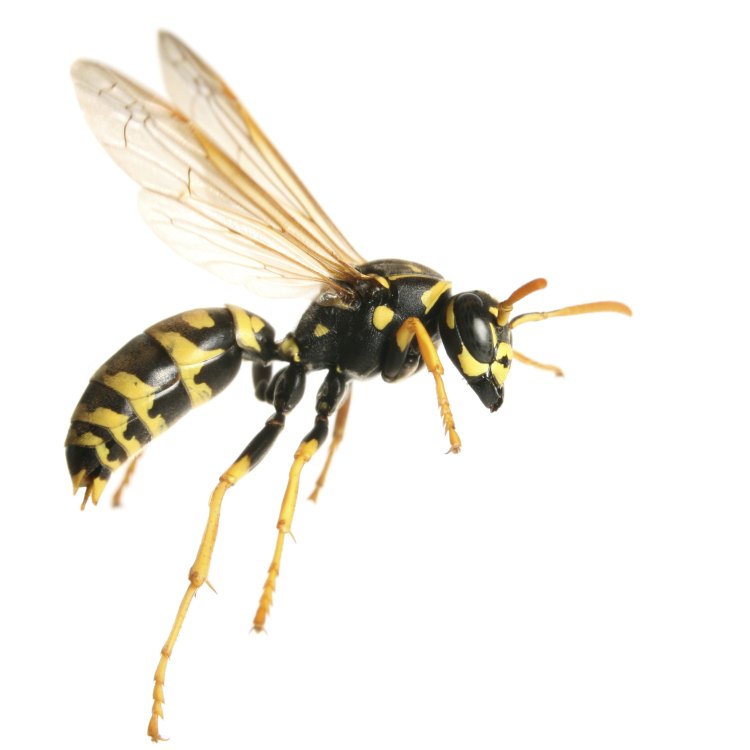
The Lethal Executioner Wasp: A Story of Survival and Fear
Disclaimer: The content provided is for informational purposes only. We cannot guarantee the accuracy of the information on this page 100%. All information provided here may change without prior notice.

